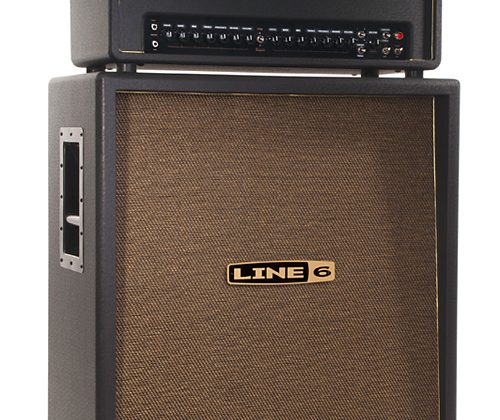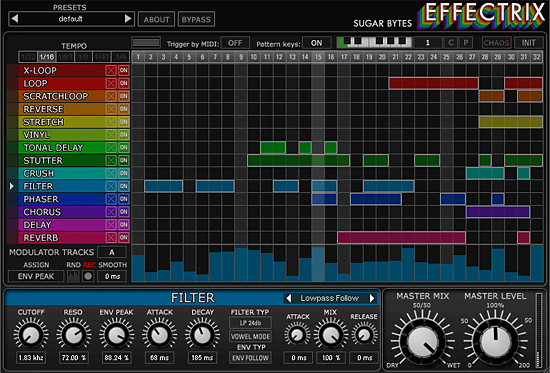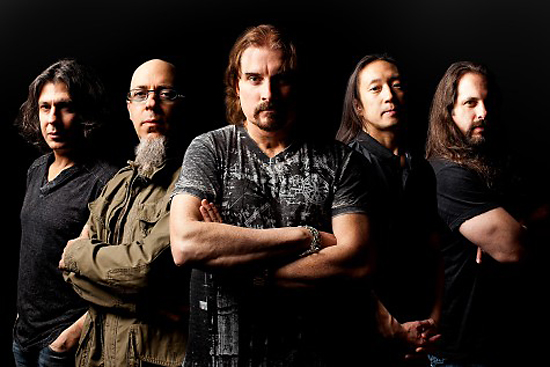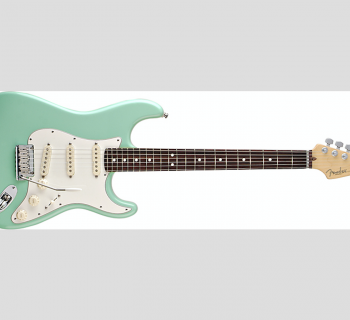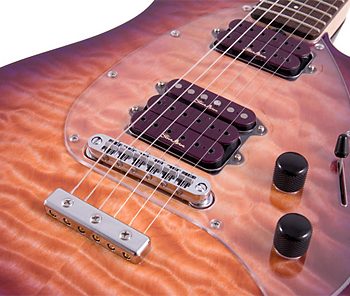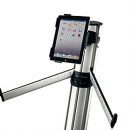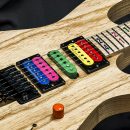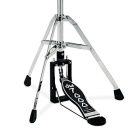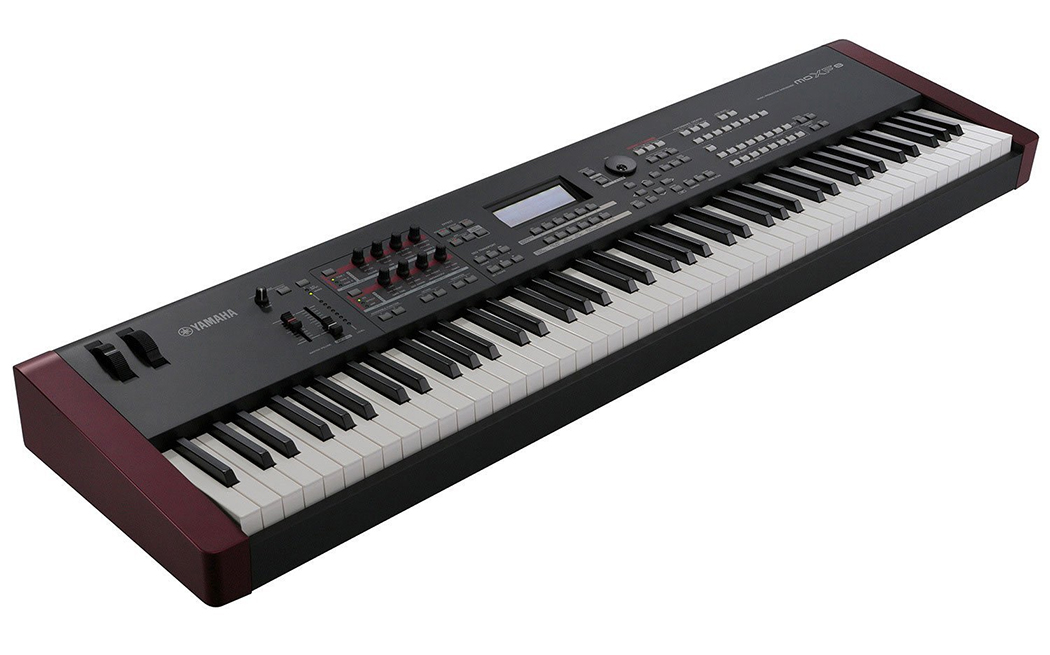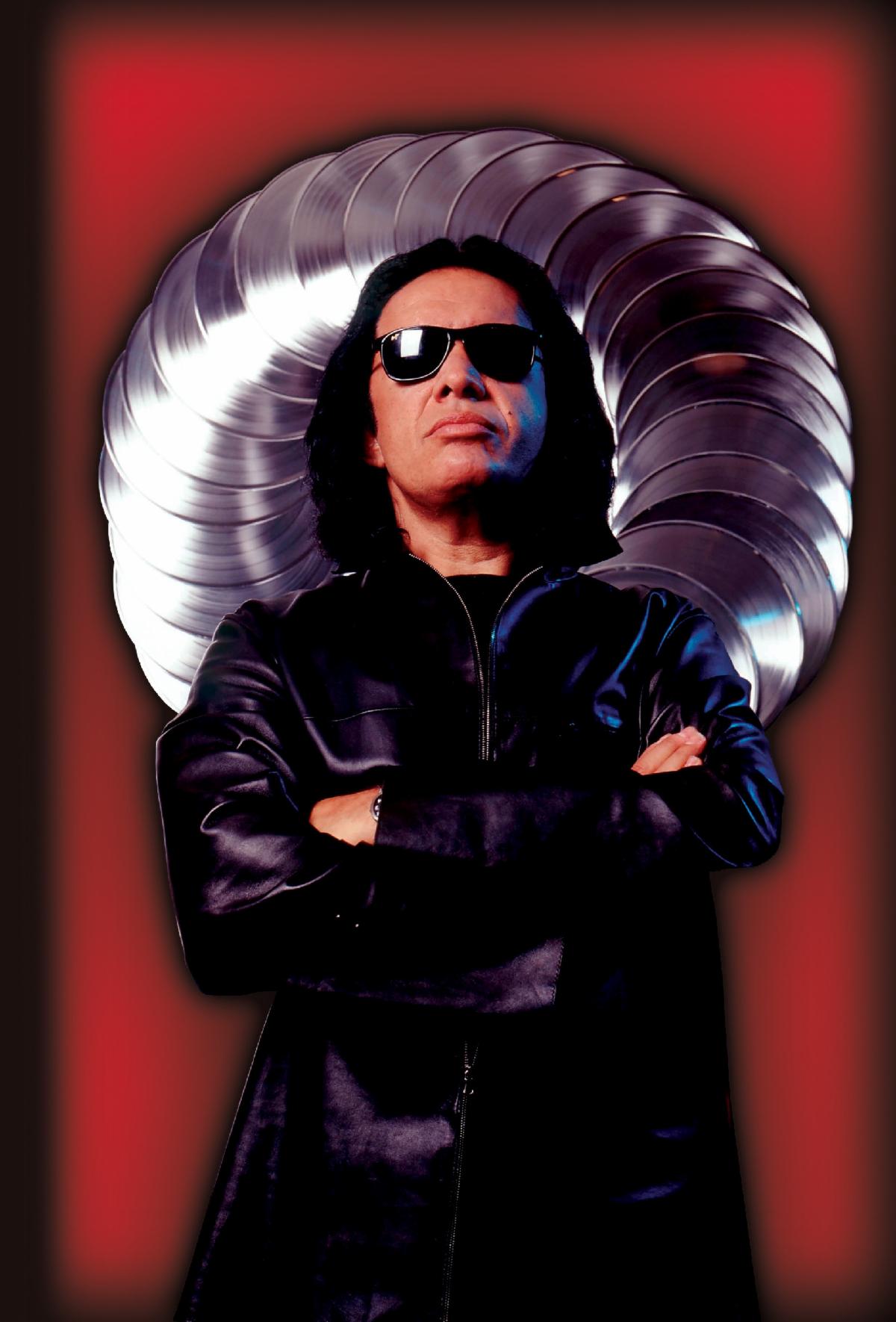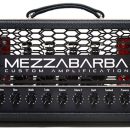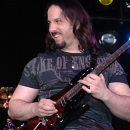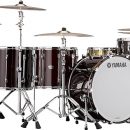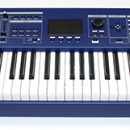Could the days of lusting for boutique amps be coming to an end? With the release of the DT50, a worthy flagship for Line 6’s line of amplifiers, legendary amp designer and builder Reinhold Bogner has given us one more reason not to spend thousands more on his hand-built tone dream machines.
Players seeking the coveted Bogner Ecstasy tone can now obtain some of that sound in a package that offers tremendous flexibility and fantastic tone for less than half the price of his name-bearing weapons of mass destruction.
| Category | Value | Rating |
| Features | 20% | |
| Usability | 25% | |
| Sound | 25% | |
| Documentation & Support | 10% | |
| Price | 20% | |
| OVERALL RATING = 3.3 3.6 stars or better: Outstanding, WIHO Award 3 stars or better: Worth considering 2 stars or better: Suited to specific needs 1 star or less: Not recommended |
||
We have marveled in reviews over the past few years how Line 6 transformed itself from a company making products for the masses (they still do, of course) to a company making professional gear desired by the pro musician and snobby tone connoisseurs. Here we are faced with the pinnacle of the company’s evolution — another great amp that we ourselves would play alongside the pricier models in our collections.
The DT50 offers an impressive tone engine that relies more or less upon real tubes based on how hard you’re driving the amp — an ingenious (and presumably patented) way to apply the advantages of modeling technology while preserving the true nature of good tube amp design. Fans of EL-34 based tube amps will welcome the flexibility that this amp delivers, ranging from high-headroom cleans to slightly overdriven classic tone to full-on modern metal assault, and it also provides some fantastic integration with dedicated Line 6 modeling products in the HD series. But fans of 6L6-based amps may find some characteristics of the EL-34 design a bit harsh sounding and less to their specific taste.
Features
The two-channel, 50 Watt, DT50 head starts with a Reinhold Bogner-designed, all-tube amplifier that includes two 12ax7 preamp tubes and two EL-34 power amp tubes. The amp runs at either 50 Watts (Class AB, fixed bias) or 25 Watts (Class A, cathode biased), assignable on a per-channel basis.
The DT50 offers multiple topologies assignable to each channel beyond the power/class section. Toggle switches on the amp let you select between Pentode and Triode mode, and a Voicing switch delivers some significant tonal variety:
I: American “Blackface” setting, tightest response (Fender).
II: British setting, looser feel than mode I (Marshall).
III: Open sounding, chimey response (Vox).
IV: High-gain optimized (Bogner).

We love that both channels are identical in their layout and control, so you can mix and match settings however you want, whether you want to have two vastly different sounding tones or have two channels of one specific style of tone with only a few subtle differences dialed in.
It feels almost wrong to be this deep into the features of a Line 6 amp and not yet mention the “M” word. This is not a modeling amp in the traditional sense, but it does incorporate some cool Line 6 technology to make the amp a more useful tool. Modeling technology is seamlessly blended with analog circuits to enable the wide variety of tones and amp response to occur, and what is especially unique is that the application of the modeling technology is applied in a new and innovative fashion.
In normal operating mode, modeling technology supplies the preamp and tone stack circuitry, but the power amp relies upon the EL-34 output tubes for tone definition and response. Although the amp has two 12ax7 preamp tubes, these are primarily used for generating appropriate internal signal levels and to enable the phase splitter to interface with the power amp. That said, however, the first preamp tube does affect the distortion characteristic in different ways based upon the preamp voicing selected.
Pulling out the Volume knob puts the amp in “kids-are-sleeping” volume mode — i.e. quiet, and this mode relies more heavily on modeling to achieve your desired tone. Power amp tube modeling is added in this operating mode since it would be otherwise impossible to push those big EL-34 power tubes into a non-linear, saturated response without adding a power attenuator to your rig. This is some serious innovation at work!

On the rear of the amp, in addition to the obvious speaker connection points (all the typical options for various speaker cabinet types), there is a cabinet-simulated output for direct recording or interfacing with a PA system.
A series effects loop on the rear has a dedicated level control for the Return.
MIDI In/Out jacks are provided for integrating the DT50 with complex rigs. Responding to a variety of continuous controller (CC) messages, you can select channel A or B, toggle the reverb On/Off, and actually change the various amp topology settings via MIDI Continuous Controller (cc) messages! Being able to instantly change your tone from Class A to Class AB or Pentode to Triode at the touch of a footswitch (or even select among the four voicing options) makes hands-free sonic experimentation quite easy, and gives you direct access to a huge variety of tones in the live setting.
Another interesting bit of technology at work is the inclusion of a Line 6 L6 Link connection for seamless integration with a POD HD-family product. When connecting one of these modeling effects processors to the DT50 and selecting an HD amp model, the DT50 dynamically reconfigures the power amp within the DT50 to provide the best matched topology for your tone.
Line 6 didn’t cut any corners when it came to designing the matched DT50 412 4x12 speaker cabinet, which could easily be mistaken for a Bogner cabinet at a quick glace. Construction features 11-ply poplar, and recessed handles and casters round out the vintage-looking, straight-front cabinet. But the real excitement is what lies inside: a pair of Celestion G12H90 speakers and a pair of Celestion V30s (rated at 8 ohms) arranged in an X-pattern. While we enjoy the sonic richness that multiple speakers can bring, keep in mind you’ll need to mike two speakers at gigs to achieve your true tone… or skip the mikes and run the cabinet-simulated outputs to the P.A. system.
Usability
Let’s just start out by saying the Line 6 DT50 head is loaded with features and options for shaping your tone, but the interface for changing these settings is completely straightforward.
From the start plugging in your guitar, the DT50 comes equipped with two inputs – High and Low. This gave us the ability to mix and match guitars in accordance with their pick-up configuration whether we were using humbuckers, single coils, or active electronics.
The control knobs are your typical black knobs with a white mark on the face to indicate position settings, making it easy to see and make adjustments at a glance. All selector switches are large toggle switches making it simple to get a hold of – not like those mini toggles found on many amps that are hard to navigate and see where they are positioned. A few of the switches actually function in true toggle motion rather than up/down switching. With these switches, the functions we selected were illuminated with backlighting on the face of the amp to show which option was engaged. This made it easy to see our settings, especially on dimly lit stages. This also holds true for all control knobs and their functions – the lettering is all backlit to provide easy reading at all times – love it!
The DT50 provides two channels, A and B. Each channel has its own dedicated control knobs including: Drive, Bass, Mid, Treble, Presence, Reverb, and Volume. It was simple to flip toggle switches and assign any of the four amp voicings to each channel, and it was equally easy to set power amp configuration (Class A/AB) and Pentode/Triode operation.
We appreciated that both the power and standby switches were located on the front of the amp.
Our favorite knob on the DT50 is the Master control knob. Silly, we know, but this dual-function knob has a push pull function that significantly reduces the output volume of the amp for bedroom practicing while relying on modeling technology to preserve your tone and amp response. We found this control to be very responsive in low settings as well as full throttle settings. Just be careful not to accidentally push the knob back In while the kids are sleeping. You will rock the house, and yes, you’ll be sleeping alone afterwards considering that this amp gets extremely loud.
It was easy to toggle between the two amp channels with a simple footswitch — but you’ll need a latching footswitch for this to work properly (like the BOSS FS-5L). Players with MIDI foot controllers will have no trouble controlling the various features of this amp from their rigs. Just set some CC values in your foot controller to match the settings in the amp and you’re off and running.
The series effects loop worked well, and the input level control was enough for us to use the loop effectively with either rack gear or a pedal. However, there was no function to bypass the loop. If you insert something into the loop, it is forever active (unless you’re using an external audio loop switching system). We would have liked to at least have MIDI CC control to engage/disengage the effects loop.
The DT50 412 speaker cabinet further demonstrates Line 6’s evolution in building professional gear. This very solidly constructed cabinet included such attention to detail as having casters mounted on removable latch plates. We love this detail — it’s found on many pricier cabinets, as you don’t have to wrestle with your cabinet to yank casters out by the wheels. Just hold the spring-loaded release button and slide… and then you’ve still got a set of rubber feet permanently attached to the bottom of the cabinet. Bravo! Now if only there had been a stereo connection option for the cab, that would have taken things completely over the top. It’s strictly mono, but hey, you can always get a pair of them and shake some walls.
Sound
The Line 6 DT50 Head and matched 4x12 cabinet provide a wide array of great sounds, and in a first-time-for-everything play, we didn't even realize that the 12ax7 tubes had nothing to do with our tone. Wow! That is some real evolutionary progress in the modeling world. Having a Bogner power amp design on the inside is a real treat, as it provides the extra punch, gain, and warmth you just can’t get from a traditional modeling amp. But the burning question many of our readers have asked is, can you consider this amp a poor-man’s Ecstasy? Lucky for our readers, for most of the testing, we had this Line 6 DT50 half-stack sitting right next to our Bogner Ecstasy 20th Anniversary model in the studio, so it was easy to run direct A/B tests and set ourselves to answering that important question (to some of our readers, anyway)… which we’ll get to a bit later in this section after talking about the amp on its own merits.
We tested with a variety of guitars and pickup configurations, but most of our detailed descriptions were obtained while playing through the High input connected to a Music Man JP6 with DiMarzio pickups and a Gibson Les Paul ’57 Reissue with Seymour Duncan humbuckers. Both of these guitars deliver a wide array of humbucking and split-coil tones.
Seeking to conjure up some Blackface tones, we started out in Mode I, Class AB, Pentode. Line 6 suggested this as the best configuration for Mode I, and after exploring all the possibilities, we agree with them. It’s great for chicken picking style playing, and the response is super-tight. The tone did get a bit harsh at times, in that special way that players who love 6L6 tube amps complain when they play through EL-34 amps like this.
In the Triode setting, Mode I lost its snap, but had a rounder, softer tone that some of our editors preferred. Switching to the lower powered Class A mode further thinned out the tone — definitely stick with AB for Mode 1, which delivers more headroom, anyway.
Powering up the amp in Mode I, one of the first things we noticed was the presence of some hiss and hum. Though not at unacceptable levels, one difference between the DT50 and some pricier amps is definitely the noise floor on clean tones, which varied depending on the various amp topologies/configurations we selected, but there was no setting that ever resulted in truly silent clean tones.
Mode II still exhibited some buzzing noise, and the DT50 easily delivered classic Vox AC-30 tone in Pentode, Class AB configuration. This is a nice crunch tone channel, but when we pulled the Master knob to play at bedroom volume, the tone took on a noticeably fizzy sound.
Switching to Triode mode made this voicing even creamier, and the tone took on more of a classic Hiwatt tone. For ‘60s and ‘70s rock, this is the voice you’ll spend a lot of time enjoying.
Dropping down to Class A while still in the Triode setting delivered more of an overdriven Fender tone. When we switched this to Pentode, more presence in the mids was obvious, and at least one editor noted the Bassman tone. Overall, this voicing had the most modern crunch sound of the options.
Mode III, Class A, Pentode, was chimey, with a tight response, but once again a bit noisy. In general, the tight response of this amp lends itself to more accomplished players with good technique. Switching to Triode and we could readily feel the squish factor kick into the response. The amp got quieter, too, but also sacrificed some volume.
Mode IV is the Bogner-voiced channel, and in Class AB, Pentode, it delivered extremely high gain and significant volume. This is the modern metal channel, and while it nails that Euro-metal chunk tone, the low end is particularly loose. When playing fast legato passages, note tracking was messy, and reducing the gain from 10 to lower settings made little difference.
The high-end was a little bit overbearing at times, and switching to Class A reduced the shrill edge of the tone, but some additional detail in the sound was lost. In general, this voicing definitely pays homage to the Ecstasy tone, and it was a blast to play with. The amp did an admirable job of maintaining note separation in complex chord voicing, and the noise floor was especially well controlled given how much gain was on tap. Further, it cleaned up well when rolling off our volume knobs.
Line 6 makes some fantastic sounding effects, so it should come as no surprise that the digitally modeled reverb in the DT50 sounded great. It’s a very usable spring reverb, even when cranked. We especially liked that it delivered spring reverb tone without the metallic clank sometimes associated with physical spring units. As such, the direct out with cabinet simulation lives up to familiar Line 6 POD quality, and is a viable option for gigs where the sound guy doesn’t want to mike your cabinet.
This is definitely more amp than you need for a typical bar gig, but if you crave a taste of Bogner high-gain tone paired with some nice classic rock tones, you can get more than half-way there at far less than half the price.
[Although not part of our formal review, it was interesting to note that one of our former interns came into the studio to check out the DT50 with his PRS Custom 24. Vinny is an accomplished, young player who worships the band Porcupine Tree and its guitarist Steven Wilson, who plays through vintage Marshalls and Bad Cat amps. As Vinny ran through at least ten different Porcupine Tree songs, we couldn’t help being really impressed by how the DT50 paired with the PRS in drop-D tuning nailed the tones from so many of Porcupine Tree’s songs. This amp is definitely not just for the classic rock and Euro-metal fan!]
The DT50 412 Cabinet provides a nice, even sound and handles the power of the DT50 head quite well. Loaded with two Celestion G12H90 and 2 Celestion Vintage 30’s, the cabinet is well equipped to support the range of tones supplied by the DT50 head. In comparison sitting next to our Bogner Ecstasy Anniversary cab, they even look to be modeled as twins.
We ran a Randall tube amp through the cabinet, and the results were equally pleasing compared with that amp’s matched speaker cabinet. If you seek an off-the-shelf cabinet with an X-pattern speaker configuration, the cabinet is certainly worth considering on its own merits for both sound as well as its quality of construction.

Documentation and Product Support
The DT50 includes a very brief Pilot’s Guide. It covers all the basics for hooking things up, and describes the basic amp topologies, but we would have liked for it to better explain the nuances of how the modeling/analog love child works its magic.
The Pilot’s Guide downloadable from the Line 6 website includes the essential listing of MIDI CC values, so don’t panic if you find them absent from your printed Guide. Additionally, Line 6 provides documentation for use of the L6 Link interface on their website, and we’ll check that out soon in an upcoming review of the Pod HD Pro.
Price
The DT50 (MSRP $1,549.99) sells for approximately $1,200, and the DT50 412 (MSRP $1,149.99) sells for $800. These are good prices for obtaining Bogner-esque tube tone in a two-channel amp with a decent mix of features. The cabinet is a very solid, professional choice to match, and it would be a worthwhile 412 for use with other amps, too.
Contact Information
Line 6
www.line6.com
| Evaluation Short-List |
|

